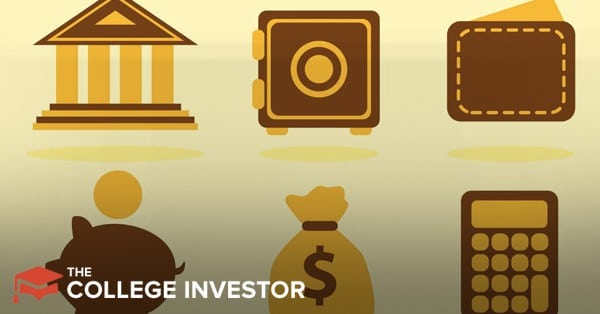Business
Understanding Infinite Banking: Does It Make Sense For You?


If you’ve spent much time on investing forums or sub-Reddits (or even TikTok), you’ve probably come across the term “infinite banking” or “banking on yourself”.
The term comes from Nelson Nash who was an economist that aligned with the Austrian school of economics. Nash’s theoretical leanings certainly influenced the concept of infinite banking, but regardless of your economic ideals it’s important to ask the question is infinite banking for me.
In this post, we’ll explain the basic concepts behind infinite banking, and explain why the concept is probably not the best way to build wealth for the average (or slightly above-average) person. Plus, we’ll give you some of the big red flags to look out for – especially if someone is pitching you hard on this concept.
Editor’s Note: This article has been updated over the years, and the comments below reflect some criticisms of our take. We strongly encourage you to read them, and then reflect on how you would know whether a life insurance policy being sold to you is the best for what you’re trying to achieve?
What Is Infinite Banking?
If you’ve ever heard a pitch for a whole life insurance policy, one of the strong selling points for the product is that policyholders can borrow against the actual cash value of the life insurance policy. If you need to pay for an engagement ring, a child’s university bill or a new car, you can borrow against the policy.
According to Nash, an individual who has enough money in whole life insurance policies can continually borrow from himself using the policy as collateral. Under this setup, you would theoretically never borrow money from a bank again. Instead, you would borrow from yourself, and pay yourself back over time. This is the concept of “becoming your own bank”.
The infinite part of infinite banking refers to the whole life insurance payout when you die. Since whole life insurance policies always pay out (as long as the premiums are paid), a person can continue to borrow against their insurance policy throughout their life. Upon their death, the payout from the insurance policy can go to the beneficiary and allow them to bank on themselves.
This could create something like a family bank, where now your beneficiaries (typically your children) can setup the same thing for themselves.
Practically Speaking, What Is Needed To Make Infinite Banking Work?
In general, infinite banking works best when the person banking on themselves has extremely strong cash flow. Whole life insurance policies can cost several hundred dollars per month (between five to fifteen times as much as term life insurance policies).
On top of that, building up cash value in the policies can take at least a few years, so a person has to be committed to infinite banking for it to work.
One of the big things here is to try to “superfund” the cash value as much as you can without tripping up the IRS rules around Modified Endowment Contracts (MEC). Otherwise, you could face tax consequences.
Another precondition for infinite banking is a high yield environment. Most whole life insurance policies invest in conservative investments such as corporate and government bonds. Right now, these investments trail inflation which means that policy holders are actually losing cash value relative to inflation.
The Big Downside: The Insurance Is Expensive
The idea of having this “fund” that you can tap at any time sounds appealing, but there are always downsides. Insurance companies aren’t offering these policies out of the kindness of their heart. They are offering these policies to make money, and that profit come from you.
It’s important to compare Infinite Banking and Whole Life Insurance to their alternatives. The alternative here being using a traditional bank to save and borrow if needed, and an investment firm to invest.
When you have a whole life policy, you have the following expense considerations:
- A well-structured whole life policy’s cash value doesn’t even start to break even for 5 to 7 years. Many policies aren’t well structured, and you might never break even…
- Agent commissions on these policies create a real incentive for insurance sales people to sell whole life policies that aren’t always in the customer’s best interest.
- If you plan to borrow from your policy’s cash balance, it’s still a loan with rates ranging from 4-8% on average. You don’t get free access to your cash balance.
Let’s Look At Some Math
It’s always easier to look at some math and see how this can work. Remember, each policy is different, and you have to look at the underlying math!
A reader recently shared his 7 year old guaranteed whole life insurance policy with us. It was issued in 6/2012. The reader is 40, male, healthy, and got the policy then at 33, when he was probably even healthier!
It’s a guaranteed whole life policy until age 99. It has a current death benefit of $1,551,262, with a current face value of $1,549,562. The monthly premium is $1,982.72.
This reader has been paying his policy for 79 months – so he’s paid a total of $156,634 for this policy.
Guess what the current cash value is in 2019? Just $88,459.
That’s almost a -40% return of the past 7 years…
But remember, if we’re looking at this through the lens of infinite banking, you’re getting life insurance AND a bank account.
If you want to separate the two – he has $88,459 in “investments/cash value” and paid $68,175 for a $1,500,000 insurance policy.
Any way you slice this it’s bad. If you wanted to get a $1.5 million term life policy, this reader would probably pay about $115/mo in a worst case. So, in the same 79 months he’s had the policy, he could have had the same insurance coverage for just $9,085. That’s a $59,090 difference! (Get a quote for yourself from the best online term life insurance companies).
I’m also assuming that he got a 0% return on his investments – because if you start changing the math on the life insurance portion, the return goes negative quickly!
And remember, we’re talking about the stock market from 2012 to 2019 – one of the longest bull markets in history! So this reader is getting a 0% return at best (likely negative though), that’s just wrong.
Also, if you wanted to tap your cash value, you’re still going to be paying interest on your loan – and if you’re in a financial position to fund a life insurance policy like this, you are also probably in a financial position to get the best loan rates available.
This is an example of a really poorly structured whole life insurance policy, but I think it illustrates what can happen very well. You spend a lot of money on insurance, and you don’t get the benefits promised by an insurance sales person.
Related: You might have heard of an insurance policy/investment called MPI or Maximum Premium Indexing. Read this article on MPI and see some math about how these policies might work in practice.
Comparing The Alternatives
Remember, we’re looking at two things here: life insurance and banking.
If you want to look at just getting life insurance, we recommend term life insurance. The goal of life insurance is simply to protect your family if you die and they lose your income. A good 20 or 30 year term policy should work for most. By the time you’re 65, you shouldn’t have people relying on your income – your kids should be grown, and you should have your own retirement savings.
If you want lifetime protection, look at Guaranteed Universal Life before a whole life policy. It’s more expensive than term, but less expensive than whole.
In our situation above, our reader would pay just $115/mo for $1.5 million in term life insurance (in a worst case – in a best case this could be as low as $40/mo). Compare that to his current whole life insurance premium of $1,982.72.
You would save $1,867 per month NOT doing this. That’s $22,404 per year.
Remember this reader’s cash value after 7 years – $88,459. Well, if you didn’t do anything by save the difference in premiums, you’d have that same amount saved in less than 4 years. In 7 years, assuming 0% interest, you’d have saved $156,828 saved. That’s just the difference in premiums. And remember, you can get 3%+ in high yield savings accounts right now.
If you wanted to borrow money, if you can afford to spend $2,000 on insurance, you probably are a highly qualified borrower and can get top tier rates. Maybe even better than what your insurance company would charge to borrower from your whole life policy.
Finally, a big argument for these policies is that they are safe, forced savings. It’s the argument that you won’t save for yourself, and you won’t invest the difference. And that you’ll need this cash value in the future.
Well, if you’re speaking to someone to setup this type of arrangement, you’re also probably savvy enough to save on your own. And you’re also probably savvy enough to speak to a financial planner than can help you properly setup your retirement.
Should The Average Person Pursue Infinite Banking?
At first blush, infinite banking sounds like a somewhat inefficient way to save money first and then spend it. In fact, until you have very strong cash flow, that’s exactly what it is.
If you want to “bank on yourself” and escape the tyranny of modern banking, an easy way to do it is to save money by earning more and spending less than you earn. That way, when you need to make a big purchase, you’ll have the cash you need to do it.
That said, for the mega-high income and mega-wealthy person, infinite banking could make some sense. Whole life insurance policies have certain advantages (cannot be garnished in a lawsuit for example), and could make sense for estate planning purposes (if you’re looking at estate tax liability). The ability to draw down the cash value for investment or consumption is basically an added benefit.
Are you mega-wealthy ($10m plus in liquid assets)? If so, ask your financial advisor about infinite banking. If you’re not, skip the infinite banking for now, and work on saving cash for you next purchase and making long term investments.
Editor: Clint Proctor
The post Understanding Infinite Banking: Does It Make Sense For You? appeared first on The College Investor.




